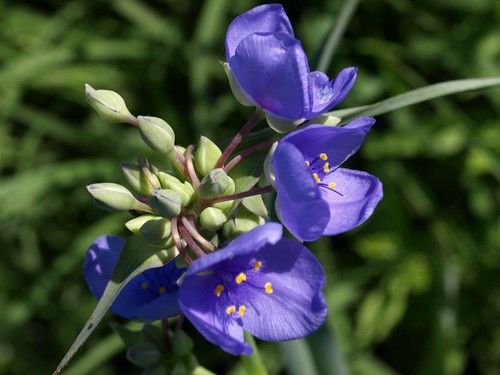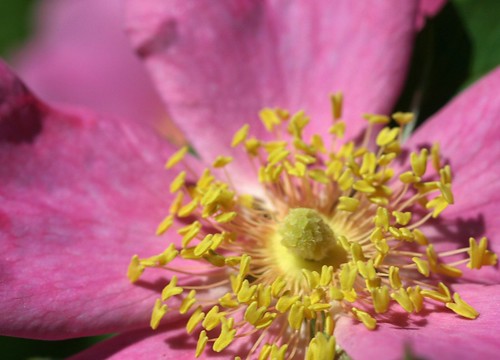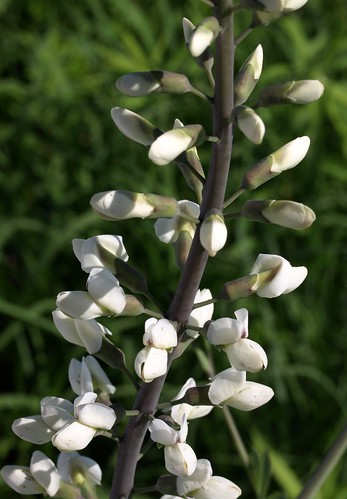Spiderwort is a common plant throughout Wisconsin, blooms from now until September. If you want to enjoy this flower, you have to visit before mid-day and each flower only lasts one day. It becomes droopy in the afternoon, and shrivels and disappears into a sticky, liquified mass by nightfall.
The Prairie Rose is another frequent Wisconsin flower, blooms from late May through late July. I love it under a macro lens – lots of bitsy yellow hearts spring out of its center. In late summer, the flower heads transform into rose hips which are small, edible fruits. They stay on the plant through the winter and provide food for birds and small mammals during the snowy months.
Native Americans collected the hips and used them medicinally, often as a treatment for headaches or stomach problems. The Native Americans and early pioneers used the wild rose for food, and a “health food” at that. Rose hips have 24 times more Vitamin C per unit than orange juice. People still collect the hips for vitamin supplements, the rose petals for rose petal soup and rose petal jam is also made using a combination of the petals and lemon.
This is the White Wild Indigo plant. It rises 3 to 6 feet from the prairie floor and is currently waving its long flower covered spires across the prairie landscape. The sap of the wild indigo has a blue dye and was often used as a substitute for the true indigo plant. It was also used as a treatment for lung diseases by Native Americans in the northcentral United States, though in larger quantities it is poisonous.









